Ancestral Chief -“Mutu Wa Mfumu,”
“Mutu Wa Mfumu,” translated from Kikongo as “The Voice of the Ancestral Chief,” is an imposing, richly textured African ritual mask that speaks of lineage, power, and transformation. This extraordinary piece originates from the Chokwe people of Angola and Zambia—an ethnic group known for its sculptural mastery and deep reverence for leadership, initiation, and ancestral continuity.
What distinguishes this mask is its arresting presence: an organic fusion of wood, fiber, pigment, and symbolic detail. It is a “Chisaluke” mask, traditionally worn during sacred rituals or masquerade performances to honor powerful ancestors, validate authority, and guide initiates through transition. Its design and construction reveal a depth of cultural knowledge embedded in form, material, and performance function.
The mask’s face is carved from a solid block of wood, featuring refined geometric precision: high cheekbones, narrowed eyes, a sharp ridge over the brow, and a rounded, expressive mouth with carved teeth. These exaggerated features are not just artistic flourishes—they symbolize heightened perception, ancestral watchfulness, and the power of speech as a sacred act. The narrowed eyes suggest a deep inward gaze, while the mouth—slightly agape and detailed with fine lines—implies the mask as a conduit for spoken truth, blessings, or even warning.
Encircling the head is a thick, fiber-covered crown structure that resembles coiled dreadlocks or an elaborate chief’s coiffure. This textured component is masterfully woven and affixed with deliberate asymmetry, creating a dramatic headdress that amplifies the mask’s sacred identity. In Chokwe cosmology, such hair constructions are not mere decoration—they symbolize status, spiritual wisdom, and ancestral beauty. This “hair” is constructed from barkcloth and vegetable fiber, treated with natural dyes and smoke-curing, giving it both durability and rich tone.
Projecting from the mask’s scalp are four horn-like nubs, carved in wood and emerging like spiritual antennae. These elements suggest cosmic awareness—connections to the sky realm and ancestral planes. The number four is often symbolic in African numerology, representing balance, the cardinal directions, and elemental harmony (earth, air, fire, water). Positioned this way, they elevate the mask to a sacred communicator—part human, part divine.
The lower rim of the mask is decorated with a woven fringe of dried vegetal material, representing the beard or oral authority of the elder. In performance, this fringe would sway with every movement, adding motion and sound, enhancing the mask’s presence on stage. The chin bears carved incisions, framing the mouth like a ceremonial tattoo—possibly referencing ancient rites of passage, clan affiliation, or spiritual protection.
One of the most compelling aspects of Mutu Wa Mfumu is the band of incised geometric motifs running across the cheeks and jawline—chevrons and triangles representing spiritual protection, journey, and generational knowledge. These patterns act as a visual language, speaking silently of memory, instruction, and respect.
This mask was not simply worn; it was inhabited. During masquerade ceremonies, the performer would be enveloped in full costume, the mask completing the transformation into a spiritual being. Chisaluke masks were often called upon in moments of community need: to mark the enthronement of a new leader, to mediate social conflict, or to sanctify the land before a harvest. In all cases, the mask functioned as the literal mouthpiece of the ancestors.
The craftsmanship is superb—each plane carved with intention, the patina richly layered from oiling, pigment application, and time. The subtle reddish hue across the forehead and crown is a sign of ritual coloring, likely made from laterite clay or iron oxide, associated with power and sacred fire.
In today’s world, Mutu Wa Mfumu is a rare cultural jewel—a sculptural embodiment of African spiritual leadership. In a museum context, it communicates themes of ancestral continuity and identity. In an interior space, it asserts strength, mystery, and sophistication. Its raw yet refined aesthetic makes it a centerpiece of thoughtful curation and a beacon for those drawn to spiritual depth.
This is more than a mask—it is a ritual device, a historical speaker, and a sacred heirloom carved in devotion, now ready to whisper its legacy wherever it resides.

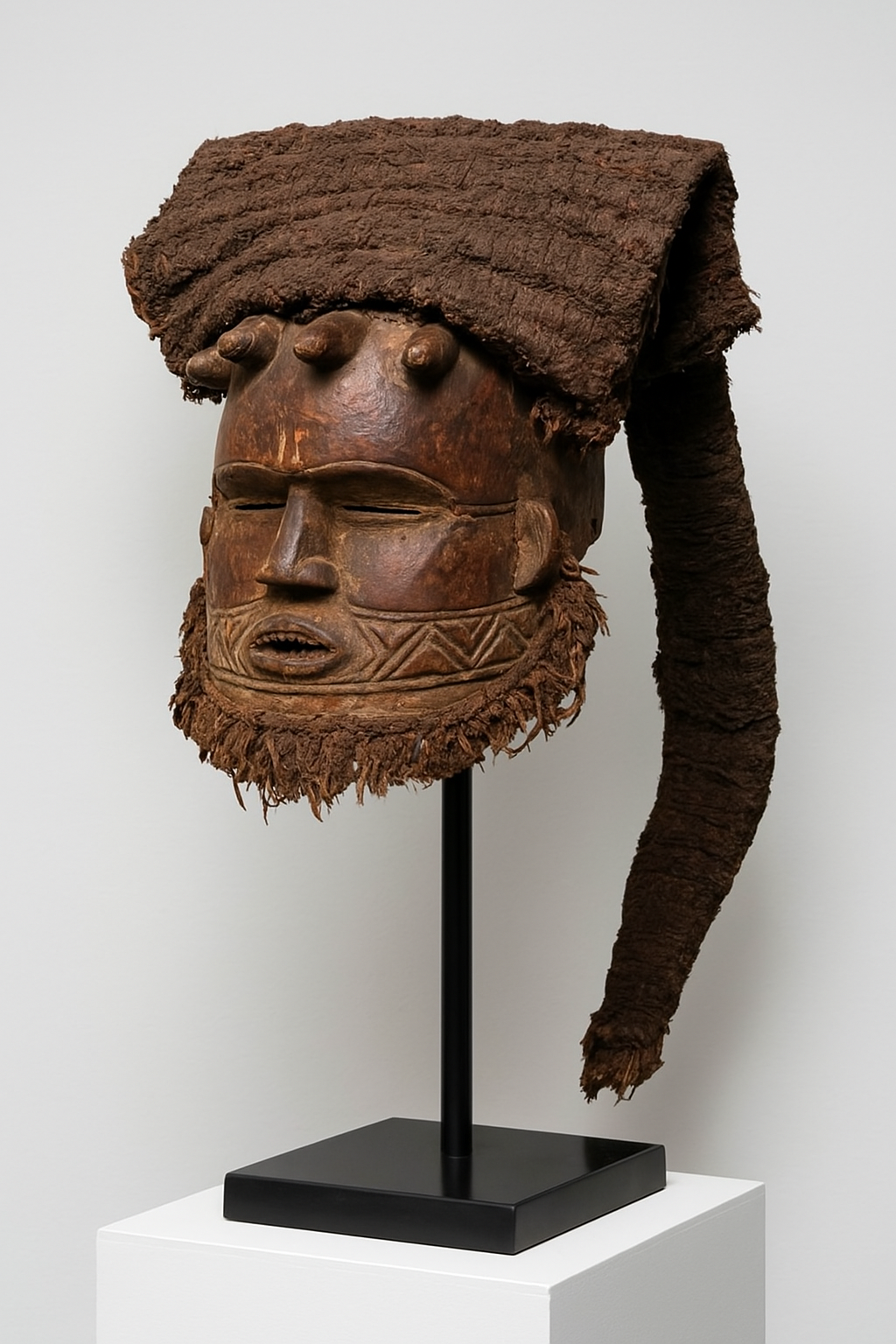
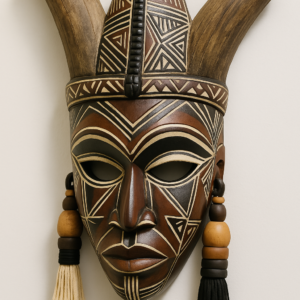
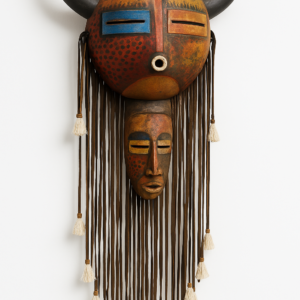
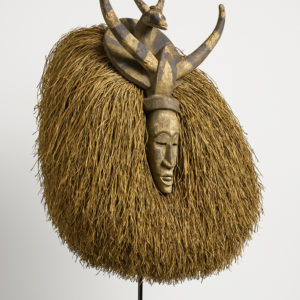
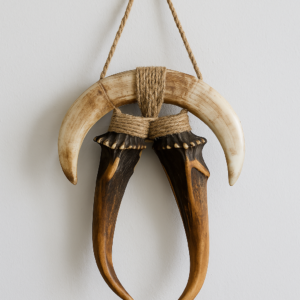


Reviews
There are no reviews yet.